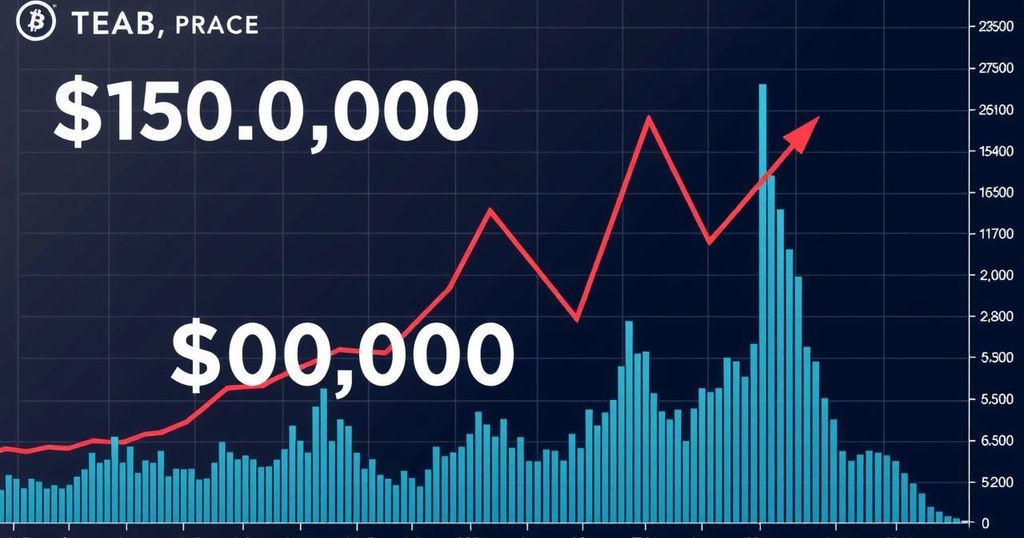Bitcoin Price Trends: Challenges Ahead as Support Levels Tested
Bitcoin recently surpassed $100,000 but has faced downward pressure, experiencing a decline amid political changes and economic indicators. Technical analysis suggests that the cryptocurrency might drop to $90,000 and potentially $80,000 if key support levels break. The ongoing political advocacy for Bitcoin reinforces its significance in the current financial context.
The price of Bitcoin has recently experienced volatility, briefly surpassing the $100,000 mark before encountering significant selling pressure that has retracted the price. Since November, Bitcoin has been on an upward trajectory, bolstered by favorable political developments, notably the election of President Donald Trump, who has shown support for cryptocurrency. While the rally observed earlier this year exhibited considerable growth, concerns remain about the sustainability of such trends.
Technical analysis reveals that short-term moving averages have successfully provided support during this bullish phase. The 20-day Simple Moving Average (SMA) played a pivotal role by maintaining a supportive stance even amid fluctuations. However, an inverted hammer candlestick pattern has emerged, indicating potential bearish reversals. Following the Federal Open Market Committee’s cautious stance on interest rates, Bitcoin has shown weakness and succumbed to selling pressure.
As Bitcoin approaches the critical 50-day SMA level, it is poised for further declines if this support fails, potentially targeting $90,000 initially, followed by $80,000. Despite the presence of bullish indicators, BTC/USD continues to face downward momentum, suggesting the need for cautious observation. Recent announcements regarding economic appointments within the Trump administration further bolster the case for Bitcoin as an asset, as pro-cryptocurrency advocates have been appointed to influential positions.
Senator Cynthia Lummis continues to advocate for Bitcoin’s inclusion within the Federal Reserve’s reserve assets, indicating a growing institutional acceptance of cryptocurrency. Her proposals indicate a strategic emphasis on Bitcoin as a means to potentially address national debt strategically, reinforcing Bitcoin’s perceived importance in contemporary economic discussions.
Bitcoin has gained significant attention as a viable asset, reflecting both investor interest and broader economic implications. The digital currency has experienced dramatic fluctuations, influenced by political, economic, and emotional factors. Recent political developments, particularly the election of Donald Trump, have correlated with bullish trends in Bitcoin, prompting discussions on its future viability as a currency and an investment asset. Technical indicators play a crucial role in determining price directions, offering critical insights into potential risks and opportunities in the market. The involvement of U.S. legislators in cryptocurrency advocacy underscores Bitcoin’s role in the evolving economic landscape.
In summary, Bitcoin’s fluctuating price is chiefly influenced by both market dynamics and political developments, notably surrounding the recent U.S. elections. Despite showing strong bullish momentum earlier this year, the cryptocurrency is facing critical resistance levels that, if breached, could result in significant declines. The growing support from influential political figures suggests a potential shift towards broader acceptance of cryptocurrencies, which may affect price trajectories and market sentiment in the future.
Original Source: www.fxleaders.com







Post Comment